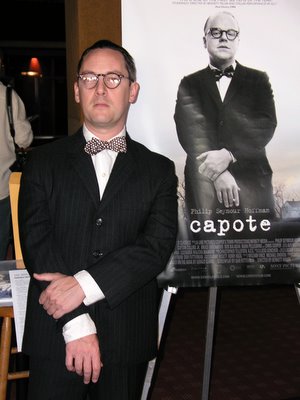 I have been blogging in real time as I read Donald H. Wolfe’s “The Black Dahlia Files: The Mob, the Mogul and the Murder That Transfixed Los Angeles.”
I have been blogging in real time as I read Donald H. Wolfe’s “The Black Dahlia Files: The Mob, the Mogul and the Murder That Transfixed Los Angeles.”
At this point in the story we are deeply mired in Elizabeth Short’s childhood and have just caught Wolfe in an incredible lie:
“Very little is known about Elizabeth’s time in Miami.”
Of course the Los Angeles County district attorney’s files include a detailed list of where Elizabeth Short lived and worked, including her exact addresses, so this is a through-and-through lie.
Page 54
Let’s see where Wolfe goes with this. I expect the worst.
Hm.
“A former Miami police officer [note to ReganBooks proofreaders, Miami is not Miami Beach] believes Elizabeth may have initially stayed in the home of a relative of the Short family—Philip Short, who was a lieutenant in the Miami Police Department in the early 1940s and was said to be connected with Meyer Lansky and Syndicate in the Miami area.”
Oh, so, so, desperate for a mob connection, are we? And what is the source for this bit of fiction?
Lead on, Watson.
Not again, Holmes!
Hm. Retired Miami Officer James Newton, 2003. And who precisely is James Newton, a name with which I am not familiar? Let’s see if he is ever further identified.
OK, now before I even start digging, look at all the things we don’t know about James Newton. He’s only introduced as “a retired Miami police officer,” so we don’t know when he retired, his rank, what his assignments were or anything else. For that matter, we only get his name if we go to the end notes. Otherwise he could be another Herman Willis, the fictional detective in John Gilmore’s “Severed.” He could have served from 1970 to 1995, for instance, and not know anything more about Elizabeth Short than Joe Six-Pack.
Any bets before I look as to whether we get any of this crucial information?
To Amazon’s “search inside” feature.
Just as I thought. Not a single word. There are times when I hate being right. This is bad work, folks.
Hm. Wolfe says Elizabeth Short had modeling jobs in Florida. Attributed to an interview with Mary Pacios. I’ve never read anything about that in the original sources.
Page 55
Man, Wolfe is a bold as they come:
“Returning to Medford in the spring of 1942, Elizabeth worked as an usherette at the Tremont, one of her favorite Boston movie palaces, where she replaced a young man who had been drafted.”
First of all, even most superficial research reveals that the Tremont was an old, second-run movie house and there’s nothing to indicate she replaced a man who had been drafted. This is just blue skying some details that nobody will ever check—OK, almost nobody.
In fact, Elizabeth Short worked at the Tremont in 1940. Very poor work on the part of Mr. Wolfe.
Time to smear some conveniently dead people: Elizabeth Short and Donald Griffin, who apparently owned a cafe in Medford, Mass., in a story attributed to Eleanor Kurz.
Oh Holmes, not again!
Watson, research is not pretty.
Pacios’ “Childhood Shadows,” Page 53. Gilmore’s “Severed,” Page 22
Ready for some torture?
“Severed”:
“Eleanor Kurz, a friend of Dottie’s [Elizabeth Short’s older sister] saw Betty often before the war, usually in the restaurant on Salem Street across from City Hall. Mr. Griffin, the owner, was in his fifties, short and stocky, with thinning grey hair, and he wore gold-rimmed glasses.
The restaurant had only a counter with stools. “I remember I hadn’t seen Betty in a while,” Eleanor says, “and she was sitting very straight on the stool farthest from the door, dressed to the minute in a leopard fur coat and hat. She made me feel like a country bumpkin. I thought to myself, Dottie’s kid sister sure has grown up!"
Eleanor said something about not recognizing Betty and how great she looked. “Some people said that Mr. Griffin was Betty’s boyfriend, but I think it was just that he wanted to help her in a fatherly way.”
“Betty had her legs crossed, and she wore dark stockings and suede pumps and a lot of makeup by Medford standards. She was in her teens but looked older—sophisticated.”
Next, “Childhood Shadows”: (Quoting Eleanor).
“Last time I saw Bette [remember, this is how Pacios refers to Elizabeth Short] was in 1941, just before the war, at Griffin’s across Salem Street from our house. Do you remember it? A small square ice cream parlor, it later became a fried chicken place. When you walked in, the stools and counter were to the right. I remember Bette sitting at the stool wearing a leopard fur coat and hat. Dressed to the minute. Sophisticated. I was very impressed! She was so striking! And I thought ‘Dottie’s kid sister has sure grown up! I felt like a country bumpkin. Bette had just come back from a trip. She was very up. Looked like she could have been a movie star.”
“I thought she might be going with Mr. Griffin,” my [Pacios’] mother said. “Bette was in a restaurant across the street all the time. I think she had a father complex. I never saw her with a man, except once on the trolley, coming home from work. She was with an older man.”
Note: Mrs. Pacios only saw Elizabeth Short with a man one time. But thought she was going with Mr. Griffin. Isn't that rather a leap?
Now what does Wolfe do with all of this?
“When Elizabeth returned to Medford, she was no longer the innocent schoolgirl who had reminded Mary Pacios of Snow White. Eleanor Kurz, a friend of Elizabeth’s older sisters, Dottie and Ginnie, remembered that when Elizabeth returned from Miami, she wore heavy makeup and would often hang around a popular cafeteria on Salem Street owned by Donald Griffin. Elizabeth had only recently returned from Florida in 1942 when Eleanor spotted her in Mr. Griffin’s cafeteria.
“I remember I hadn’t seen Betty in a while and she was sitting very straight on a corner stool furthest [note to ReganBooks, it’s farthest. Even “Severed” has it right] from the door, dressed to the minute in a leopard fur coat and hat,” Eleanor recalled. “Betty had her legs crossed and she wore dark stockings and suede pumps and a lot of makeup by Medford standards. She was in her teens, but she looked older—sophisticated. She made me feel like a country bumpkin. I thought to myself, Dottie’s kid sister sure has grown up!”
Although Mr. Griffin was quite a bit older than Elizabeth, Eleanor recalled there were rumors circulating in Medford that Mr. Griffin and Elizabeth were having an affair. “Some people said that Mr. Griffin was Betty’s boyfriend,” Eleanor stated, “but I think it was just that he wanted to help her in a fatherly way.”
Notice that Wolfe has transposed this incident to after the beginning of World War II. I don’t know if this is accidental or intentional. And of course, Griffin’s little cafe, which didn’t even have tables, gets expanded into a cafeteria. Most of all, Wolfe dives for the bait on Elizabeth and Griffin having an affair.
And of course he doesn’t tell us that Eleanor Kurz is Mary Pacios’ sister.
Oh, oops.
It would be nice to know more about poor old Mr. Griffin, but my archives are a bit thin on Medford city directories and I’d have to check them at the Los Angeles Public Library. Out of the question for this little exercise. Here’s the bottom line. Everybody’s talking about how sophisticated Elizabeth Short looked when she came home from Florida. OK, here’s one of the pictures from Miami Beach that’s all over the Net. You tell me if this is the image of a femme fatale.
Here’s the bottom line. Everybody’s talking about how sophisticated Elizabeth Short looked when she came home from Florida. OK, here’s one of the pictures from Miami Beach that’s all over the Net. You tell me if this is the image of a femme fatale.
Nope, this is what everybody imagines when they think of the Black Dahlia: Stephen Peringer’s illustration for James Ellroy’s novel.
Now here’s the deal. This blog is incredibly time-consuming. I don’t really need to go any further to prove my point. I’ve caught Wolfe in any number of fabrications and distortions. I have passed the number of pages that correspond to my age, so I’m in fair territory. I’m going to throw this blog open for comments for a week to see if there is enough interest in continuing. I have lots of other irons in the fire, like the upcoming rollout of the successor to the 1947 Project, that are much more fun—and more satisfying.
So, if there’s interest in continuing, I will. Otherwise I’m going to hang it up. I guarantee you, the book is not going to suddenly improve.
Shot out to:
Schifferstadt, Germany (84.173.83.104)
Intercontinental Fragrance, Houston (65.16.203.153)
Bexar County Information Services, San Antonio, Texas (206.254.152.1)
Hollywood Production Center (67.151.223.83)
Let me know!Labels: 1947, Black Dahlia, Books and authors, City Hall, Education, Hollywood, Homicide, LAPD, Streetcars





 I'm waiting.
I'm waiting.






